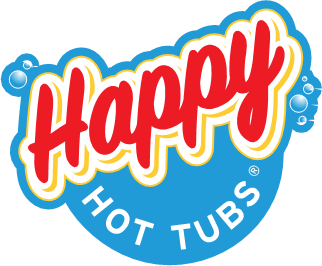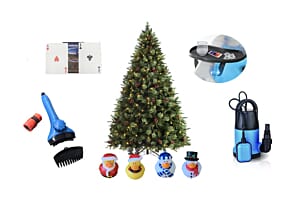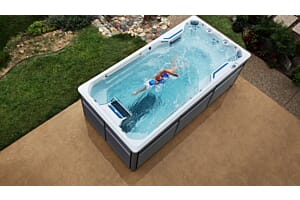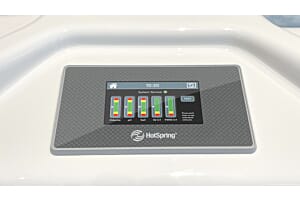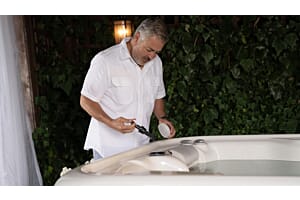10 Ways to Reduce Hot Tub Running Costs


With energy efficiency at the forefront of everything in today's world we thought it would be useful to share some tips for existing hot tub owners to save on energy costs. From simple tips like keeping your filter clean to more creative ways like operational adjustments, this blog post will help reduce running costs and help you enjoy the hydrotherapy benefits that a hot tub brings.
Happy Hot Tubs are a retailer of Hot Spring Spas, who produce some of the most energy-efficient hot tubs on the market. Hot Spring Spas are tested to high energy standards in California and feature full-foam insulation to ensure that your hot tub will retain as much heat as possible. If you are considering an efficient hot tub, consider Hot Spring Spas and see the Energy Smart Spa difference.
1. Ensure Your Cover is in Good Condition and Fits Well
Your hot tub cover is one of the most important parts of heat retention as it prevents or reduces heat lost through the most likely area that heat can escape. A good hot tub cover will not be waterlogged (excessively heavy), should contain a heat lock hinge where the cover folds and should fit well to ensure a proper seal is created.
If your cover is cracked, heavy, worn or fits poorly you should consider replacing it. See our range of hot tub covers in stock or if you cannot find your size, see our custom-made hot tub covers.
2. Try a Lower Temperature
We do not recommend turning your hot tub down between usage as this can actually be less efficient however turning your general usage temperature down slightly will reduce energy costs. For example if you run your hot tub at 39 degrees celcius usually then try 38 degrees. This will result in the heater coming on less and therefore a smaller electric bill!
3. Turn Air Controllers Off
An air controller is a small lever around the bartop of your hot tub. When turned 'on', it will allow air into the jet stream which adds power. This air tends to be cooler than the water so it does have a cooling effect. If your hot tub circulates on the large jet pump then we reccomend turning air controllers to 'off' when the hot tub is not in use to prevent any unnecessary cooling of the water.
4. Use a Floating Thermal Blanket
A Floating Thermal Blanket is a great way to add an extra layer of insulation before your thermal hot tub cover above. Even as a thin pool-style bubble cover, this helps prevent heat loss through evaporation and also protects your hot tub cover from chemical damage, which protects your investment.
5. Keep Filters Clean
A clean filter is a key part of maintaining clean and safe hot tub water however the energy saving benefits are perhaps understated. A dirty filter can reduce the flow in your hot tub, this not only strains the pump but also means that the efficiency of heating the hot tub is reduced. A hot tub is heated by water entering through the filters and then by passing through the heater and back out through the jets so if this process is slowed by a dirty filter then the heater has to work for longer to heat the hot tub. We reccomend cleaning your filter with a filter cleaner every 2-4 weeks depending on usage, you can see our handy filter cleaning guide here.
6. Try a Less Exposed Location
In our opinion a hot tub that is located near the house is better as it gets more usage, which improves the overall hot tub experience. This area tends to also be more sheltered from wind and weather. The more exposed a hot tub is to the elements, the more it will cost to run. This is simply because any sort of shelter or wind break helps reduce heat loss from the sides or top of the hot tub. Those who place a hot tub in an enclosed shelter will see even more of an efficiency benefit.
7. Use Matting As a Base
Hot tubs tend to be placed on concrete, slabbed or decked bases. The stone surfaces especially are generally cold and poor for heat retention. To help reduce heat lost to the floor, we reccomend placing a hot tub on our EVA Floor Mats. Heat lost to the base is relatively small for rigid hot tubs when compared to inflatable hot tubs but there is an efficiency benefit of using matting on both types of hot tub.
8. Ensure Chemicals are Balanced
Balanced sanitiser and PH levels ensure that components do not corrode, ensures your water lasts as long as possible without having to drain and keeps your filters cleaner for longer. All these factors reduce hot tub running costs as you will reduce water usage, keep water flow as high as possible (which helps make heating as efficient as possible) and protect your hot tub components from corrosion. For more on hot tub water balance, see our hot tub care guide.
9. Use a Cover Bag or Cap
A hot tub cover protection cap is designed as an outer cover to your hot tub cover. This not only protects the cover from debris but also has a small insulation benefit where it acts as a thin windcheater for the spa. A hot tub cover bag covers the whole hot tub unit and offers the same benefits of a cover cap but with the small insulation benefit helping with the sides of the hot tub, as well as the cover/top.
10. Consider Trading-In Your Old Hot Tub
Enjoy using an inflatable hot tub but don't like the electricity bill? Own a hot tub that has little-to-no insulation and want to save money on running costs? Looking for a modern hot tub that is more efficient to run? These could all be valid reasons to look at a trade-in. Not only will you get value towards your old hot tub but you will also save a lot on energy going forward.
See our range of energy efficient Hot Spring hot tubs or get in touch today.
